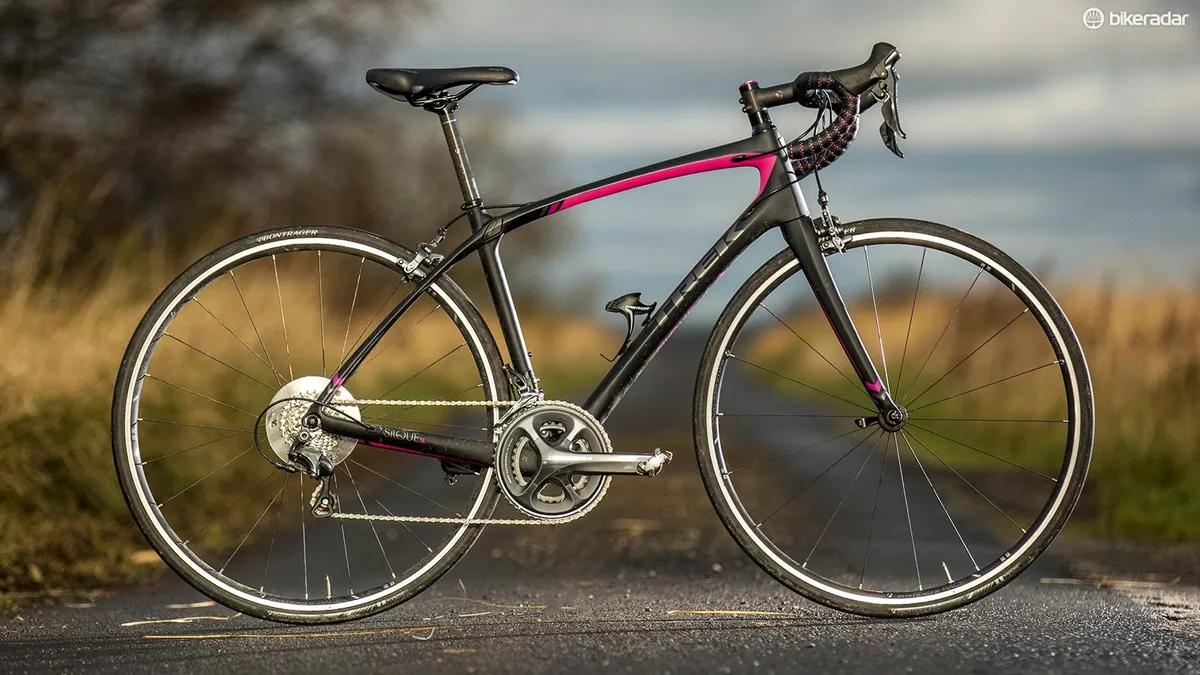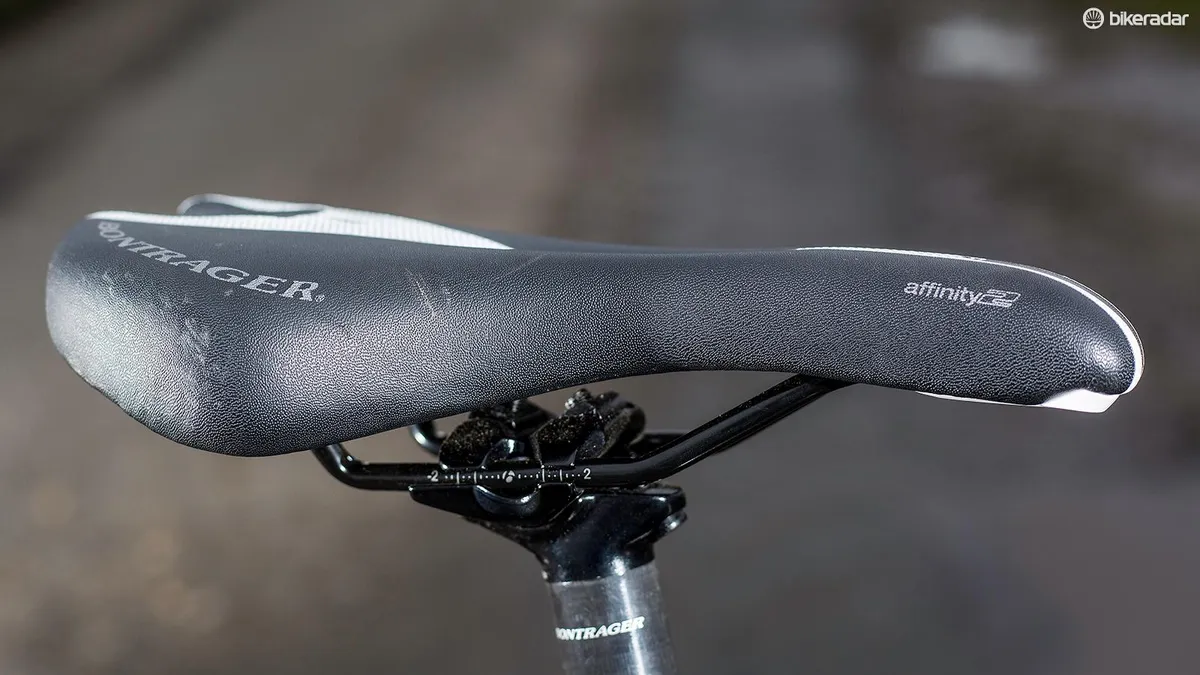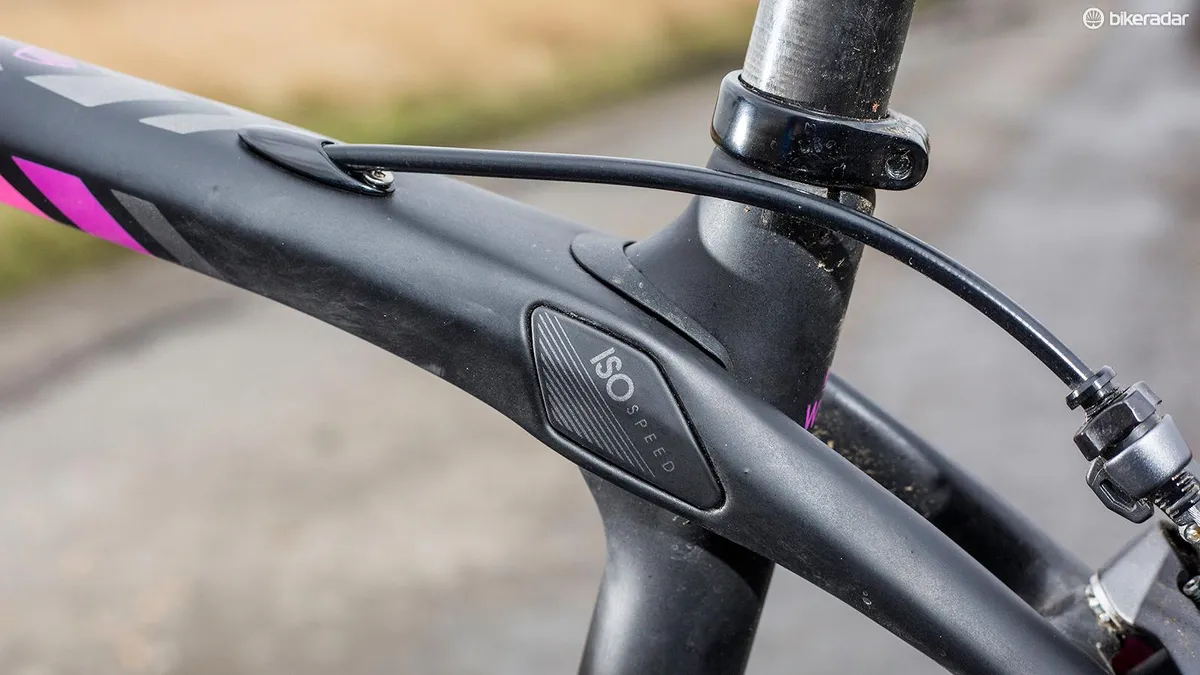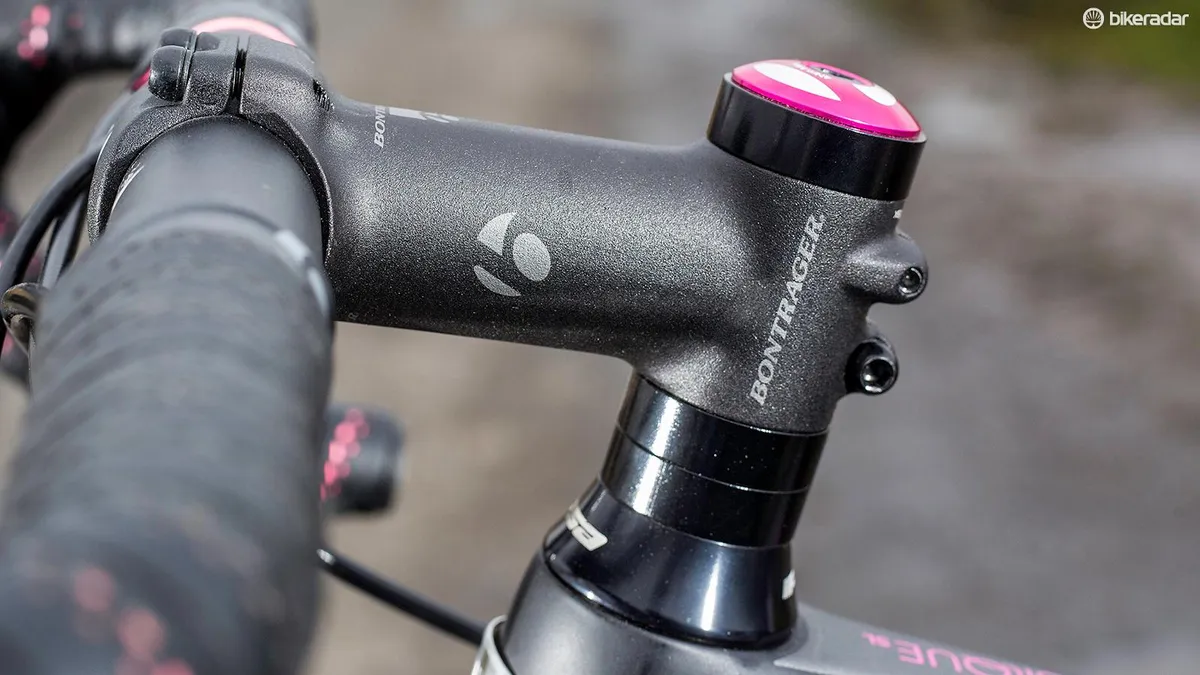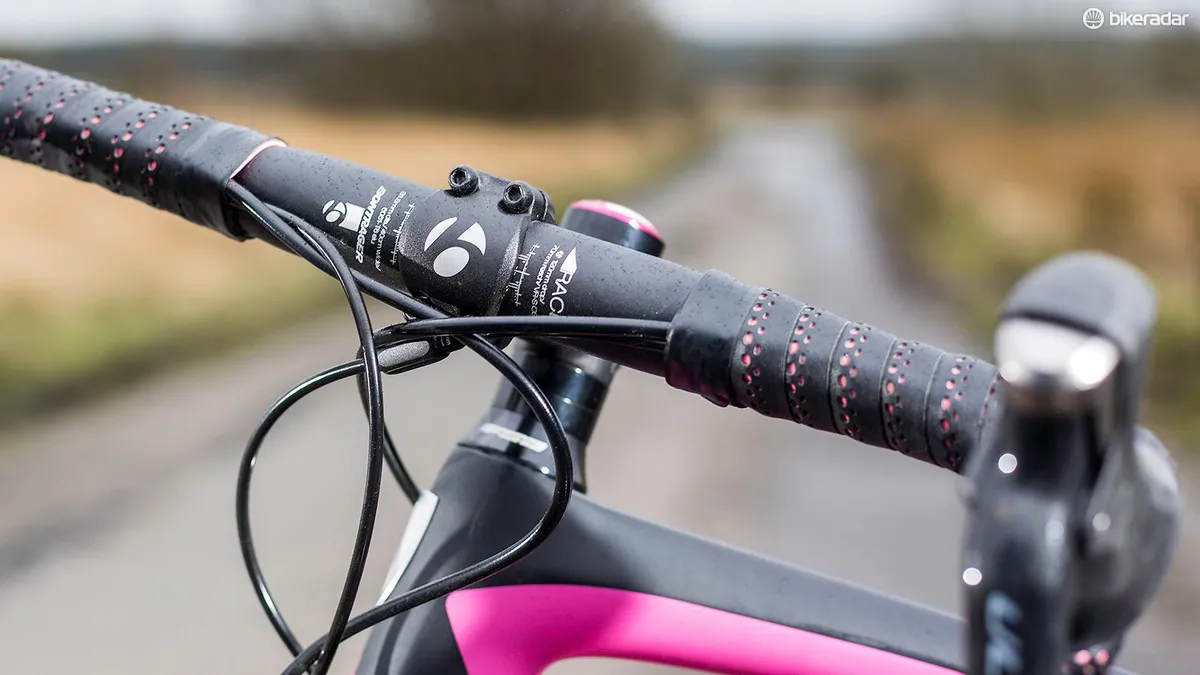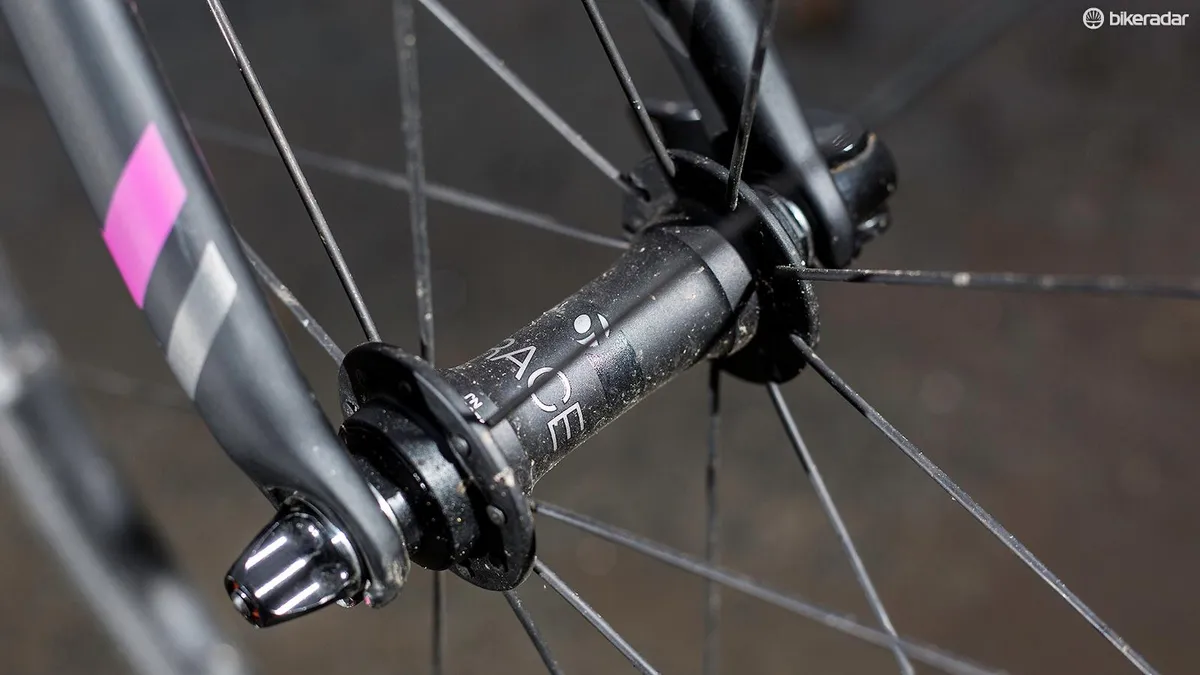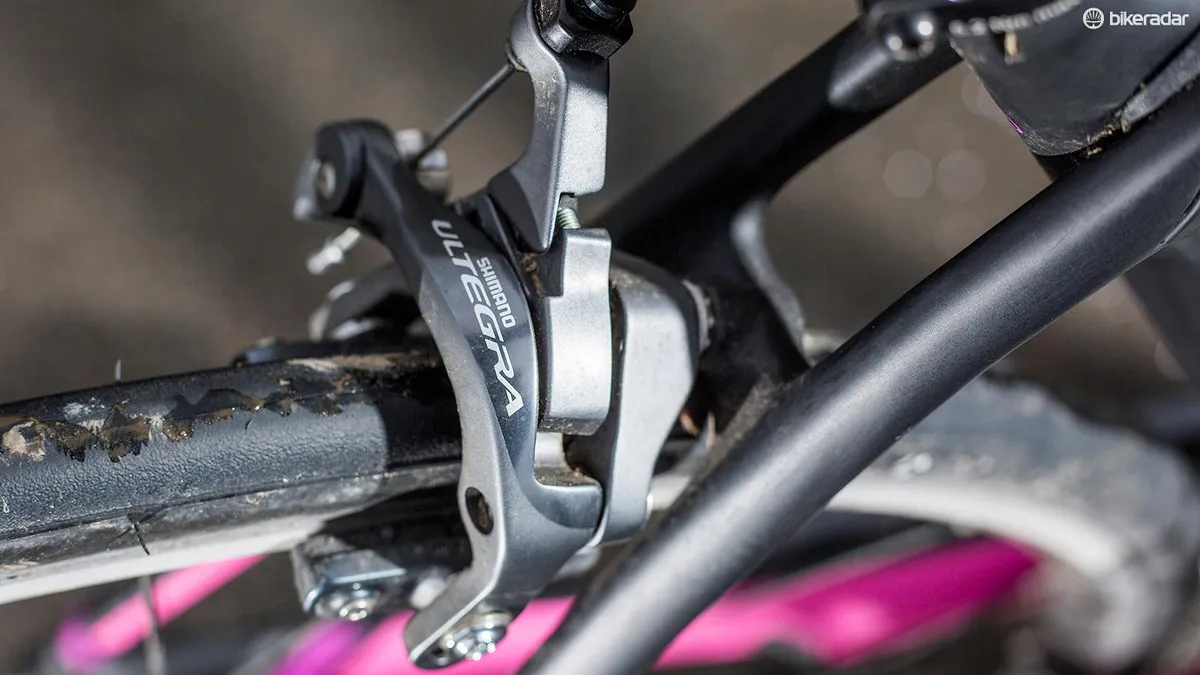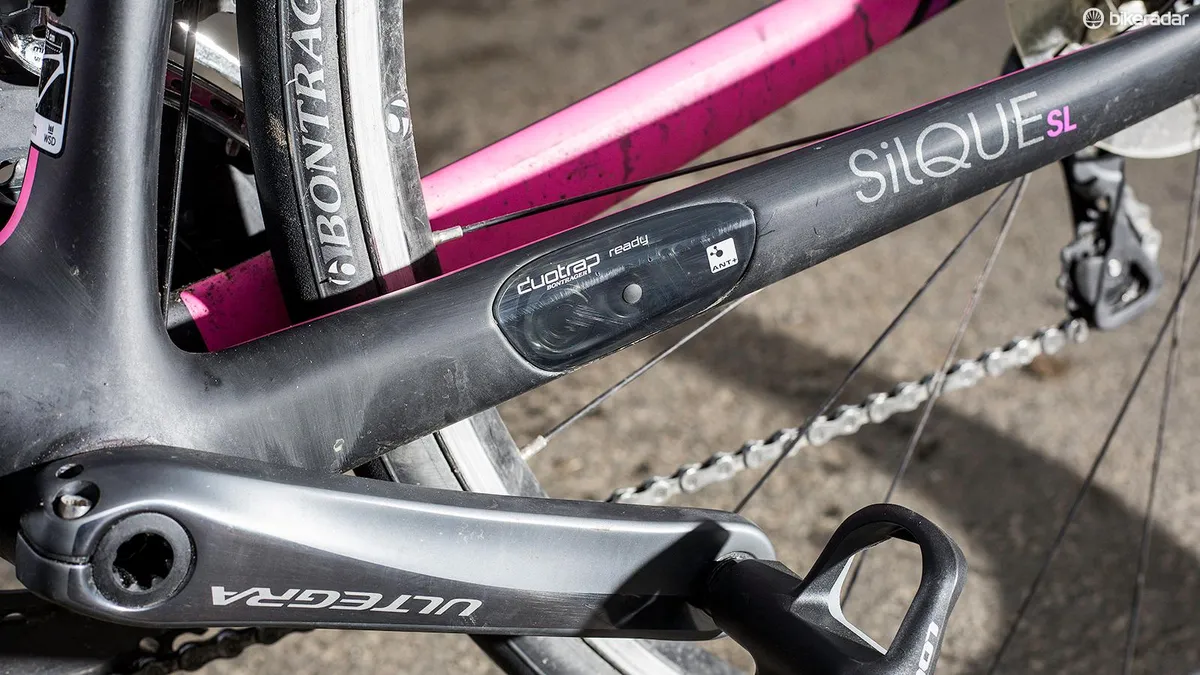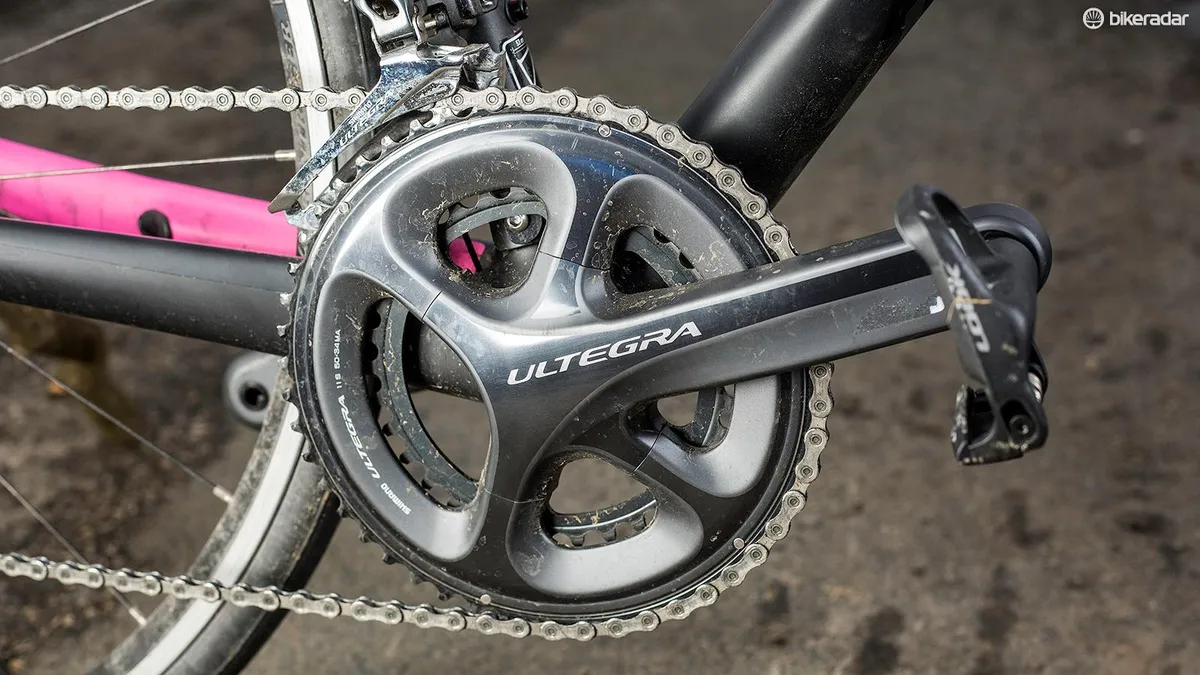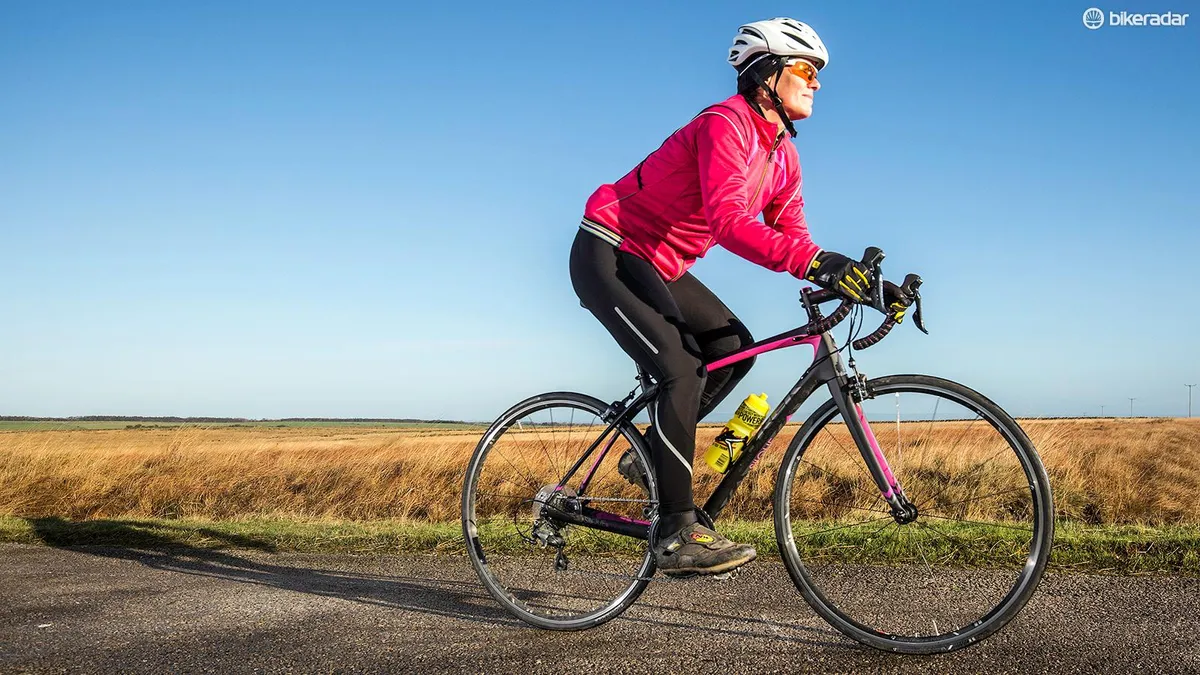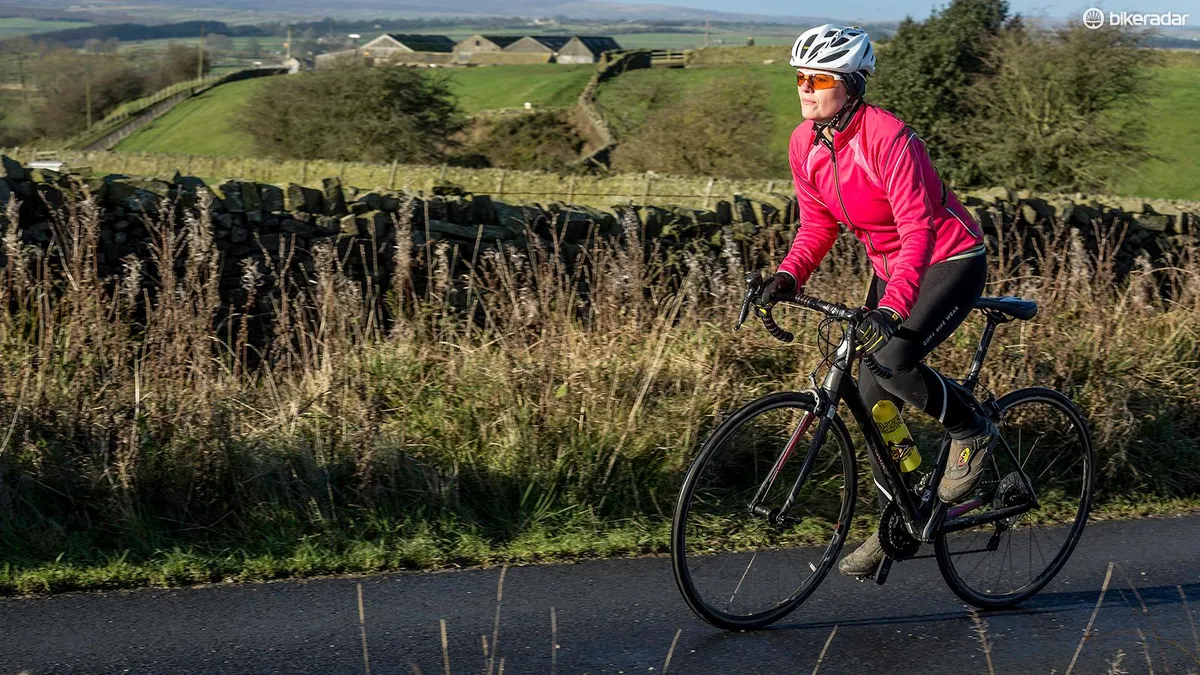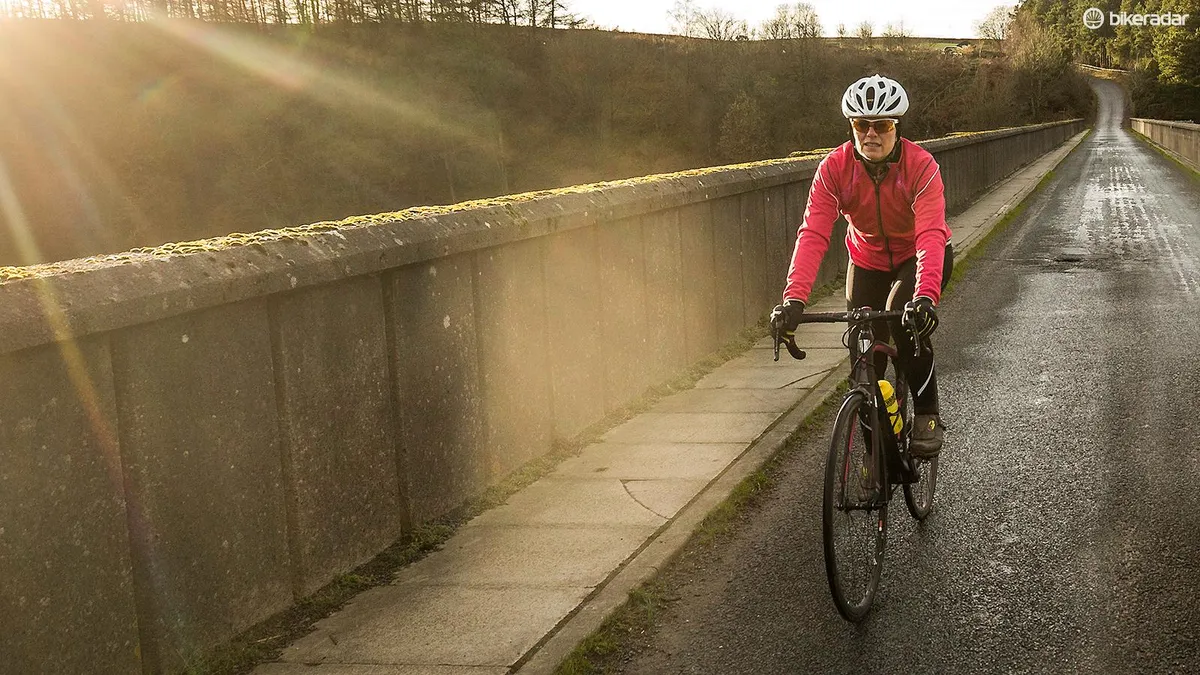Trek was the first major brand to introduce ‘Women’s Specific Design’ (WSD) bikes nearly 20 years ago, and the range now covers 15 different road bikes – spanning entry-level to superbike realms – as well as 14 mountain bikes and seven city bikes.
Thanks to the Silque, Trek is ahead of the curve if you’re looking for the smoothest road ride possible – and this Ultegra equipped SL is a particularly strong example of this unique bike.
Pivotal plushness
Perhaps the most remarkable part of this genuinely radical frame is that it’s easy to totally miss the parts that make it unique. Visually the only trace of the ‘IsoSpeed decoupler’ is a small rubber ‘spray deck’ around the junction of the top tube and the seat tube that pierces straight through it. There’s another rubber wrap around the sides and underside of the top tube too and that’s what hides the crucial pivot that pins the two tubes together.
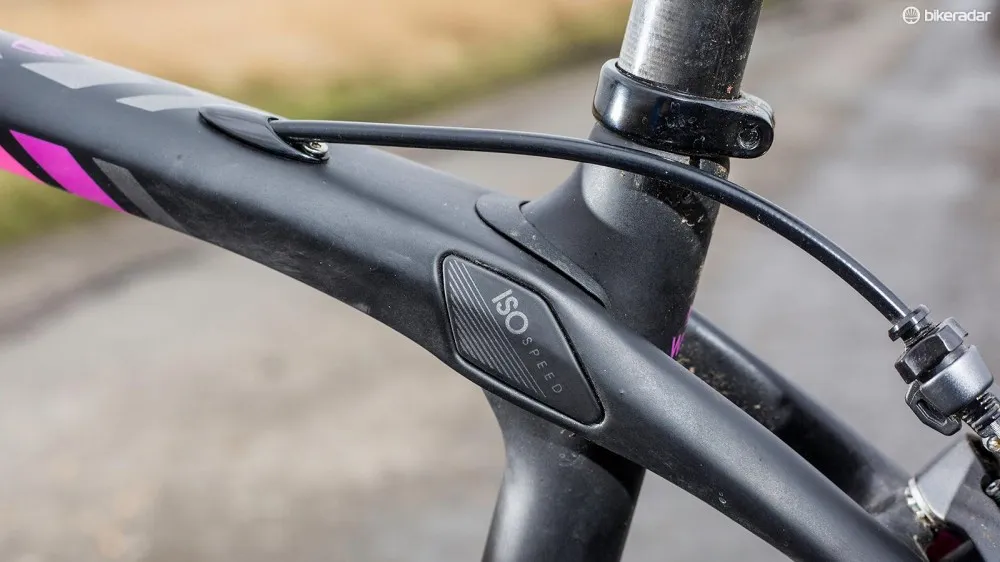
Trek's unique IsoSpeed technology allows the seatpost to pivot
Yes, we did say pivot. Rather than a standard fixed joint between the vertical and horizontal axis of the frame, the Silque (like it’s Domane unisex equivalent) uses a pivot that lets the seat tube flex back and forth as the bike rattles across rough roads.
Curved, flattened ‘leaf spring’ seat stays add vertical compliance between the rear wheel and the IsoSpeed pivot too. The carbon sheet arrangement used in the tapered E2 fork has a lot of vertical forgiveness too, giving an impressively consistent luxury limousine feel to both ends of the bike.
Whatever Trek’s extremely experienced (the brand was among the first carbon frame producers) OCLV carbon designers have done with the layup of the carbon layers, it definitely works – as any eerily smoothed potholes or ironed out washboard gravel sections will prove immediately.
Stress relief
While Trek has remained tight-lipped about where the inspiration for the IsoSpeed Decoupler concept came, from we can remember watching a conventional rigid alloy test frame in one of its Wisconsin HQ labs being stress tested for frontal impacts. This was achieved by flexing the forks backwards and forwards in exactly the way hitting a pothole, rock or ridge in the road would do and we can still remember just how much the lower part of the seat tube bulged forwards and the top tube arced upwards as the fork tips were pumped backwards and forwards.

The front end isn't far off the back's limousine smoothness
Whether it was watching this very test and seeing the potential gains of letting the two axes of the bike move independently rather than fighting against each other that former the IsoSpeed seed we obviously don’t know. However, the theory of letting the two tubes flex with minimal restriction definitely works in practice, to let impact energy flow through the bike much more easily.
Related: Trek Silque SSL women's endurance road bike
As the bike is effectively free to move wherever it wants under the saddle it also replicates exactly the ‘hover just above the saddle’ technique that powerful riders use for the cobbled sections of classic races like Paris Roubaix. The difference is the Silque doesn’t rely on you to lift up slightly over knobbly sections; the design just lets the frame float between you and battering road surfaces, adding even more to its fatigue-reducing efficiency.

Silque by name…
The wheels and tyres can be converted for tubeless running with a snap fit rim strip too, potentially smoothing out the ride even further as well as adding self healing puncture protection.
Epic ride kindness
While the smoothness of Trek’s Domane/Silque bikes is relatively well known, the question we got asked over and over again about the bike was whether it feels soft and bouncy when pedalling too. It’s a fair question, as many flexible aftermarket seatposts we’ve used get tiresome in their twang if you’re cranking a gear round slowly on a climb.
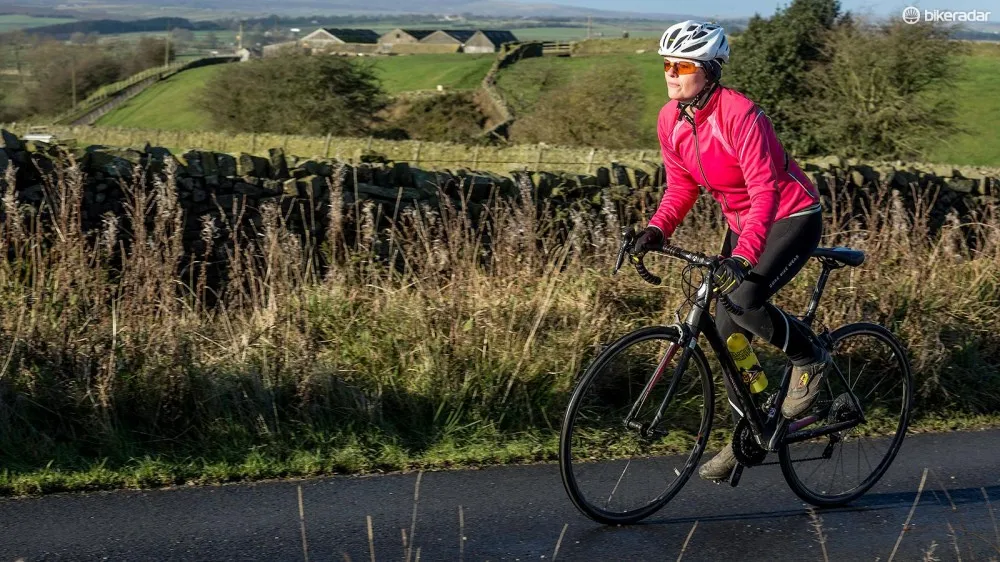
Out of the saddle, you're disengaged from the seatpost flex, and the frame is plenty rigid enough
Happily there’s very little trace of the back-and-forward movement of the Silque saddle in the pedal stroke, and the very wide-range rear cassette with it’s 32t bottom cog means you’ll rarely have to grunt gears round slowly to provoke it. Because the ride softening mechanism is centred around the saddle, things feel reasonably firm when you stand up and – even with the extra pivot hardware and complexity it’s not a bad overall weight. All this adds up to a bike that wouldn’t be our first choice for QOM hunting on hills (Trek’s superlight Emonda WSD would definitely be in the running for that) but certainly doesn’t struggle getting to the summit.
The long wheelbase and traction enhancing smoothness make for very surefooted descending confidence too, and while there’s no disc option on any of Trek’s WSD road bikes, the Ultegra SLR-EVs are some of the best rim brakes you’ll find on a normal production bike. While it isn’t the most dynamic ‘have a go hero’ machine the docile handling also underlines the Silque’s wonderfully forgiving ‘carry you home’ character so if you’re looking to extend your epic rides resumé in 2016 and beyond you’d be hard pressed to find a kinder bike to do it on.
